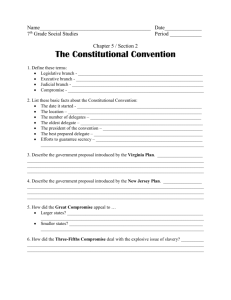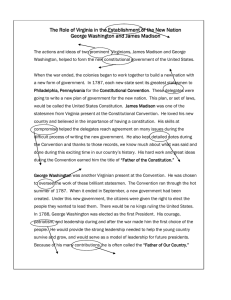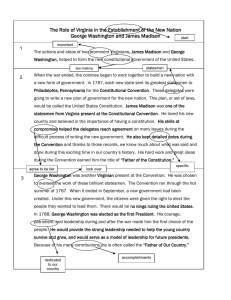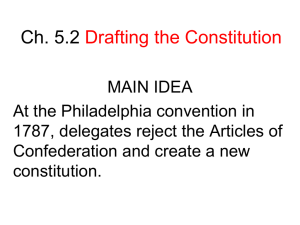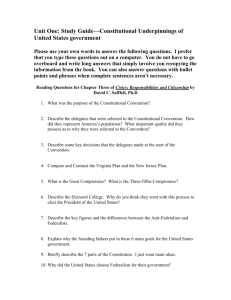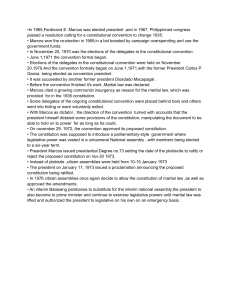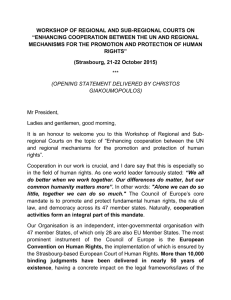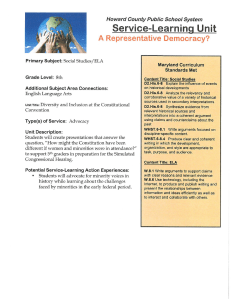Finally, in May 1787, all the states except Rhode Constitutional Convention
advertisement
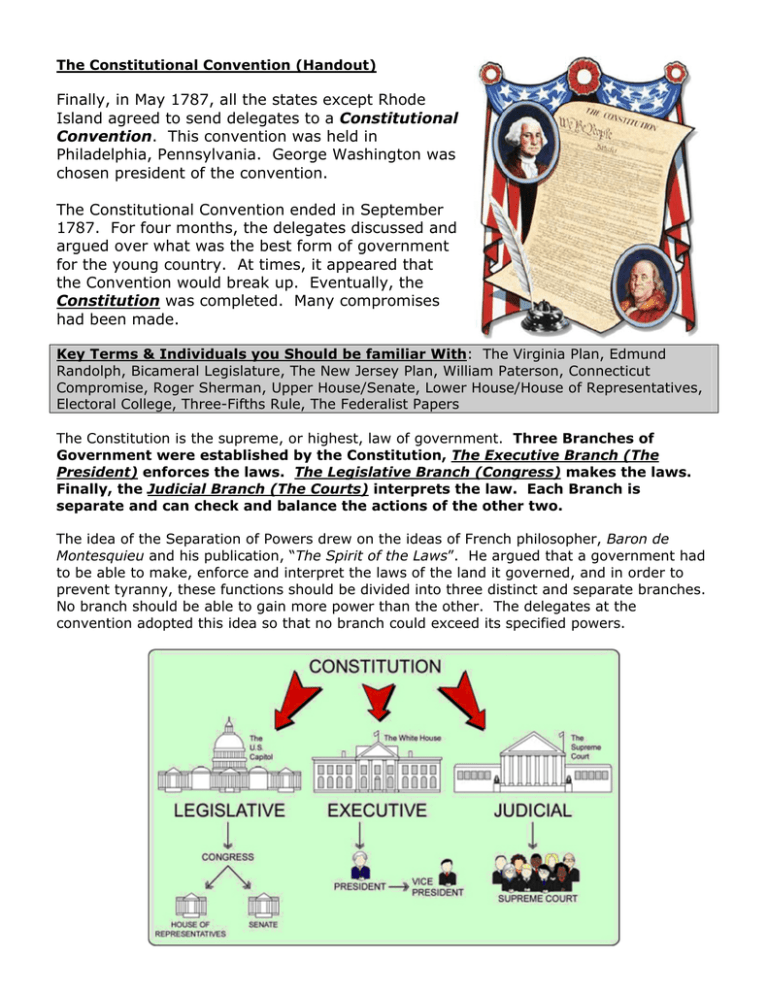
The Constitutional Convention (Handout) Finally, in May 1787, all the states except Rhode Island agreed to send delegates to a Constitutional Convention. This convention was held in Philadelphia, Pennsylvania. George Washington was chosen president of the convention. The Constitutional Convention ended in September 1787. For four months, the delegates discussed and argued over what was the best form of government for the young country. At times, it appeared that the Convention would break up. Eventually, the Constitution was completed. Many compromises had been made. Key Terms & Individuals you Should be familiar With: The Virginia Plan, Edmund Randolph, Bicameral Legislature, The New Jersey Plan, William Paterson, Connecticut Compromise, Roger Sherman, Upper House/Senate, Lower House/House of Representatives, Electoral College, Three-Fifths Rule, The Federalist Papers The Constitution is the supreme, or highest, law of government. Three Branches of Government were established by the Constitution, The Executive Branch (The President) enforces the laws. The Legislative Branch (Congress) makes the laws. Finally, the Judicial Branch (The Courts) interprets the law. Each Branch is separate and can check and balance the actions of the other two. The idea of the Separation of Powers drew on the ideas of French philosopher, Baron de Montesquieu and his publication, “The Spirit of the Laws”. He argued that a government had to be able to make, enforce and interpret the laws of the land it governed, and in order to prevent tyranny, these functions should be divided into three distinct and separate branches. No branch should be able to gain more power than the other. The delegates at the convention adopted this idea so that no branch could exceed its specified powers. Separation of Powers – Checks and Balances (Handout) Legislative Branch (The Congress) House of Representatives; Senate. House and Senate can veto each other’s bills. Executive Branch (The President) Executive office of the President; executive and cabinet departments; independent government agencies. Judicial Branch (The Courts) Supreme Court, Court of Appeal, District Courts


